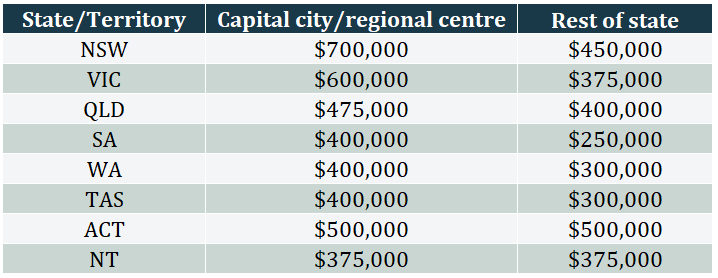
Are you reviewing your SMSF’s investment strategy?
As trustee of a SMSF, you have many obligations to ensure the smooth running of your fund. One such obligation, which is often overlooked, or inadequately prepared, is your fund’s investment strategy.
The Australian Tax Office (ATO) has issued letters to nearly 18,000 SMSF trustees as part of a campaign to ensure trustees are aware of their investment obligations.
The primary concern is ensuring that trustees have considered the diversification and liquidity of their assets when formulating and executing their fund’s investment strategy.
Importantly, it should be noted the ATO is not attempting to regulate and limit the control and freedom SMSF trustees have, but rather ensuring that if trustees wish to invest their assets in a certain way that they must clearly articulate their reasons for doing so.
An investment strategy should be considering the SMSF’s blueprint when dealing with the fund’s assets to ensure the fund’s investment objectives and the members’ goals are met. It provides the parameters to ensure you invest your money in accordance with that strategy. This is where the ATO has a primary function to ensure that trustees act in accordance with these obligations. Strategies can change, and there is no reason why you can’t change the way you invest. However, your investment strategy should be updated to reflect this.
An SMSF investment strategy must take into account the following items:
- The risks involving in making, holding and realising the SMSFs investments, their expected return and cash flow requirements of your SMSF.
- The diversification and composition of your SMSF investments.
- The liquidity of your SMSF investments, having regard to expected cash flow requirements.
- The SMSFs ability to pay your current and future liabilities, including benefits to the members.
- Considering whether to hold insurance cover for each member of your SMSF.
An important requirement for you as trustee of your SMSF is to have an investment objective and a strategy to achieve that objective in place, before you start to make decisions about how you want to invest your SMSF’s money and change the investment objectives you have set for your SMSF at any time.
It’s not uncommon for SMSFs with lower member balances to find diversification a challenge as there is limited money to invest. Nonetheless, you are still required to demonstrate that you adequately understand and mitigate the associated investment risks.
If you find yourself in this position, it is important your investment strategy reflects these risks.
If you have invested in a large illiquid asset such as real property which may form the majority of your fund, it is timely to ensure your strategy reflects the concentration and liquidity risk associated with this investment.
For example, we met with a trustee who was running an account-based pension within his SMSF. His fund was fully invested in just the one asset being a commercial property. The challenge he faced each year was that the net rental income wasn’t sufficient to cover his minimum pension payments and the costs of running the fund. He relied on making annual contribution to his fund in order meet his pension obligations. This liquidity risk wasn’t adequately reflected in his investment strategy.
Where you have an investment strategy in place that deals with these risks and can provide the necessary evidence to support your investment decisions, no further action is expected.
Where your fund has not complied with its investment strategy requirements under superannuation law, you may be liable to administrative penalties being imposed by the ATO, as Regulator of the SMSF sector.
Your investment strategy does need to be reviewed at least once a year and this will be evidenced by your approved SMSF auditor. It is also important to review your strategy whenever the circumstances of any of your members change or as often as you feel it is necessary. The following practical tips will help you keep on top of your obligations:
- Put your investment objective and strategy in writing
- Set an investment objective that you can realistically achieve with the investments you are comfortable to invest in
- There is no template for an investment objective and strategy, but make sure they reflect how you intent to invest your fund
- The investments you actually make must be accommodated by the investment strategy you have set
- Most importantly, document your actions and decisions, as well as your reasons, and keep them as a record in order to demonstrate that you have indeed satisfied your obligations as a trustee in this important area
How can we help?
If you need assistance with your fund’s investment strategy, please feel free to give us a call to arrange a time to meet so that we can discuss your particular requirements in more detail.





